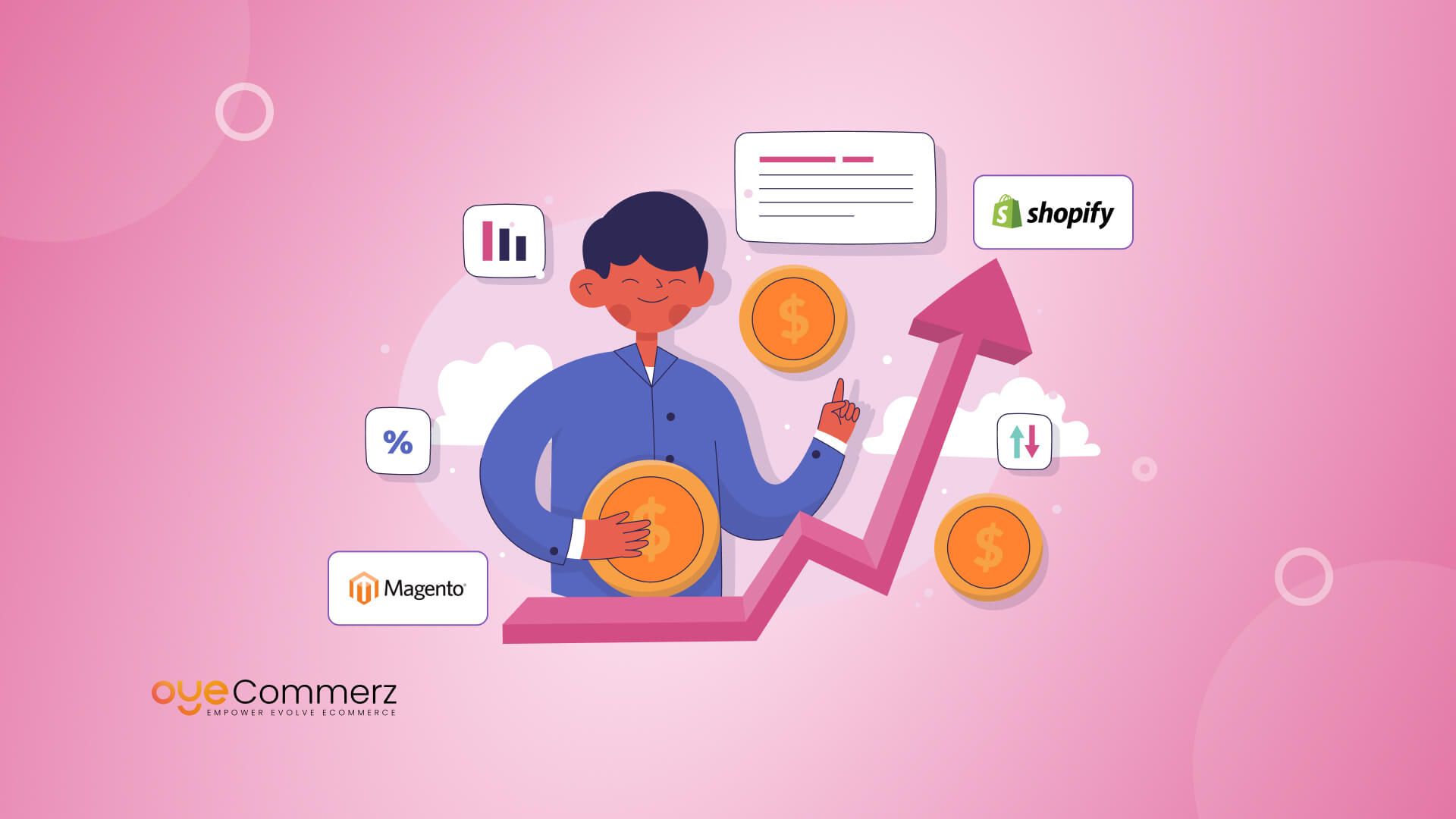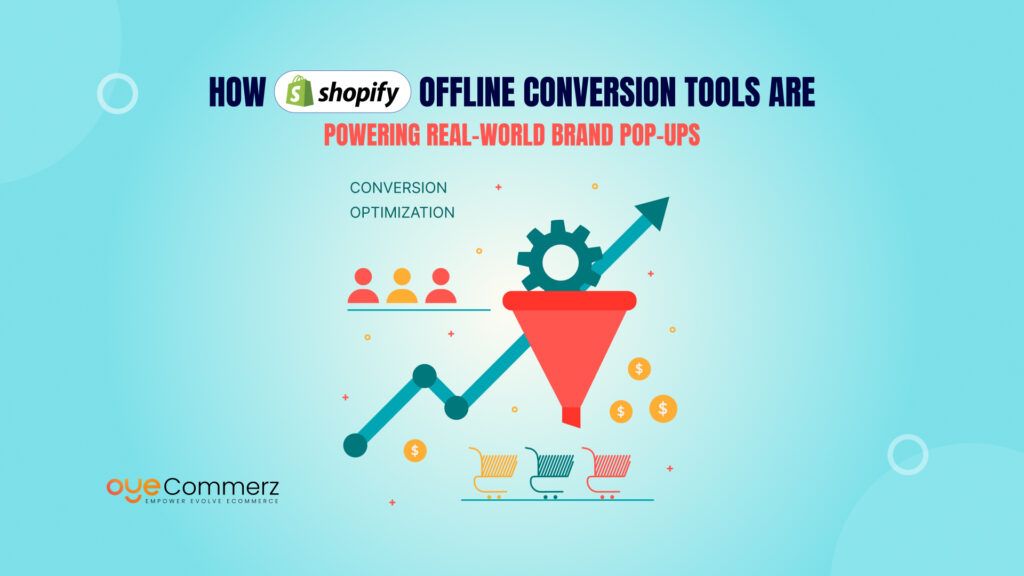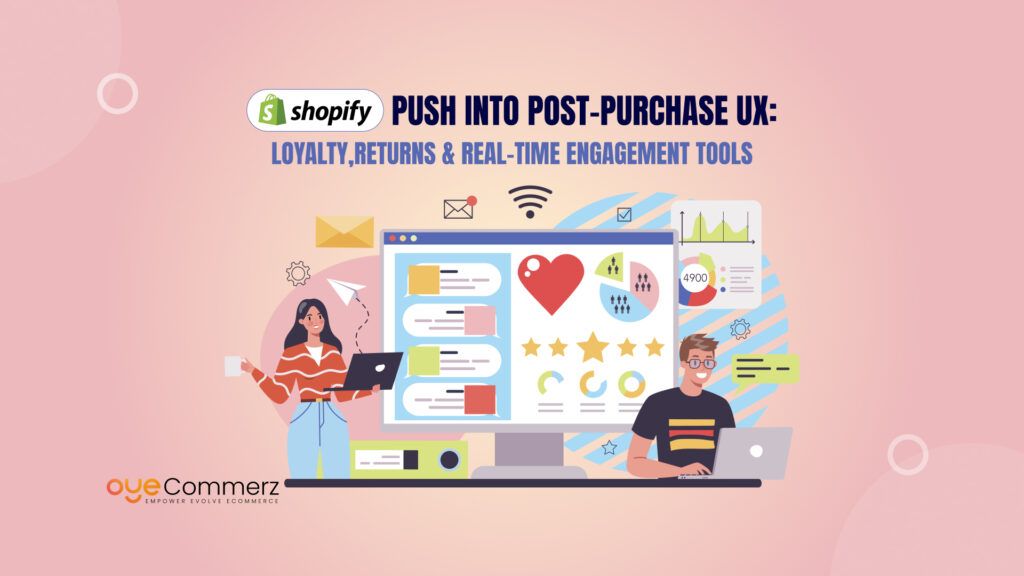Is your Magento store slowing you down with high maintenance costs, technical glitches, and limited scalability? You’re not alone many business owners are making the switch to Shopify for a smoother, more profitable e-commerce experience.
In fact, businesses that migrate to Shopify see an average revenue increase due to better site performance, enhanced customer experience, and AI-powered personalization. As an existing Shopify business owner, you already know the platform’s potential but if you’re still managing a Magento store, now is the time to upgrade.
A seamless Shopify migration from Magento isn’t just about transferring data; it’s about optimizing your store for growth. From maintaining SEO rankings to integrating app development for custom features, we’ll guide you through a fast and hassle-free migration that sets your business up for long-term success.
Let’s dive into how the right migration strategy can help you maximize revenue without downtime or technical headaches.
Table of Contents
ToggleWhy Revenue is Important for an Ecommerce Store?
Revenue is the lifeblood of any business, especially for an eCommerce store. It’s what keeps your business running and allows it to grow. Without consistent revenue, it’s difficult to sustain operations, let alone expand or improve. Here’s why revenue is so important for the success of your eCommerce store:
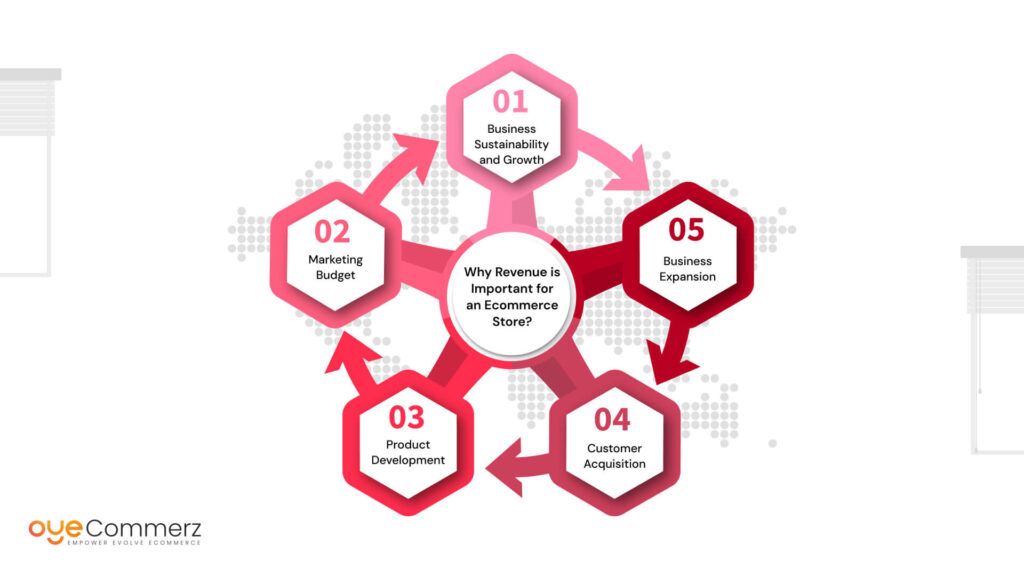
Business Sustainability and Growth
Revenue is the foundation of a sustainable business. It covers essential expenses like inventory, employee salaries, and operating costs. As your revenue grows, so does your ability to reinvest in your business, improve your products, and scale operations to meet customer demand.
Marketing Budget
Revenue directly impacts how much you can spend on marketing. The more revenue your store generates, the more you can invest in advertising, promotions, and other marketing strategies to attract new customers and retain existing ones. With a healthy revenue stream, you can run effective campaigns that drive even more sales.
Product Development
Revenue enables you to invest in better products and new features for your store. The more money your store makes, the more you can improve your product offerings, develop new ones, or even enhance your website’s functionality. This helps you stay competitive and meet the evolving needs of your customers.
Customer Acquisition
Revenue allows you to invest in attracting new customers. From paid ads to influencer partnerships, having a solid income lets you explore different ways to grow your customer base. More customers mean more sales, which in turn increases your revenue, creating a cycle of growth.
Business Expansion
Finally, higher revenue gives you the resources to expand your business. You can open new sales channels, enter new markets, or even expand internationally. Revenue is essential for long-term business expansion and success.
In short, revenue doesn’t just pay the bills, it helps your store grow, attract more customers, and develop better products. Maximizing your revenue is key to achieving long-term success and staying competitive in the eCommerce space.
The Revenue Potential of Migrating to Shopify
Switching to Shopify can open up new ways to grow your revenue by improving your store’s technology, customer experience, and overall efficiency. Here’s how:
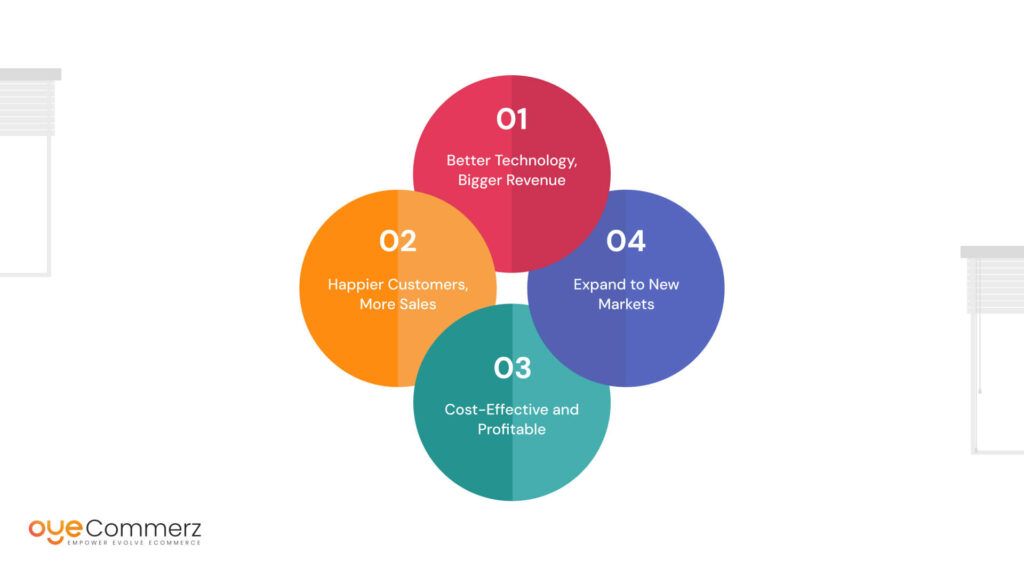
Better Technology, Bigger Revenue
Shopify’s platform is designed to be simple and efficient, helping you avoid technical issues that slow down your business. This means you can focus on growing your store and scaling your operations without worrying about complicated systems.
Happier Customers, More Sales
Shopify offers faster website loading, mobile-friendly designs, and an easy checkout process all of which make shopping easier for your customers. These improvements lead to higher conversion rates, meaning more visitors will turn into paying customers.
Cost-Effective and Profitable
Shopify is more affordable to maintain than Magento. Plus, its wide range of apps allows you to add new features without costly custom development. The money saved can be reinvested into marketing, product improvements, or other growth strategies.
Expand to New Markets
Shopify supports multiple languages and currencies, making it easy to sell to customers worldwide. Whether you’re targeting local or global markets, Shopify gives you the tools to reach more people and increase your revenue.
By migrating to Shopify, your store can become more efficient, customer-friendly, and ready to grow, unlocking its true revenue potential.
How Shopify’s Features Enable Revenue Growth
Shopify is packed with features that help you grow your revenue by making it easier for customers to shop and for you to market your products. Here’s how:
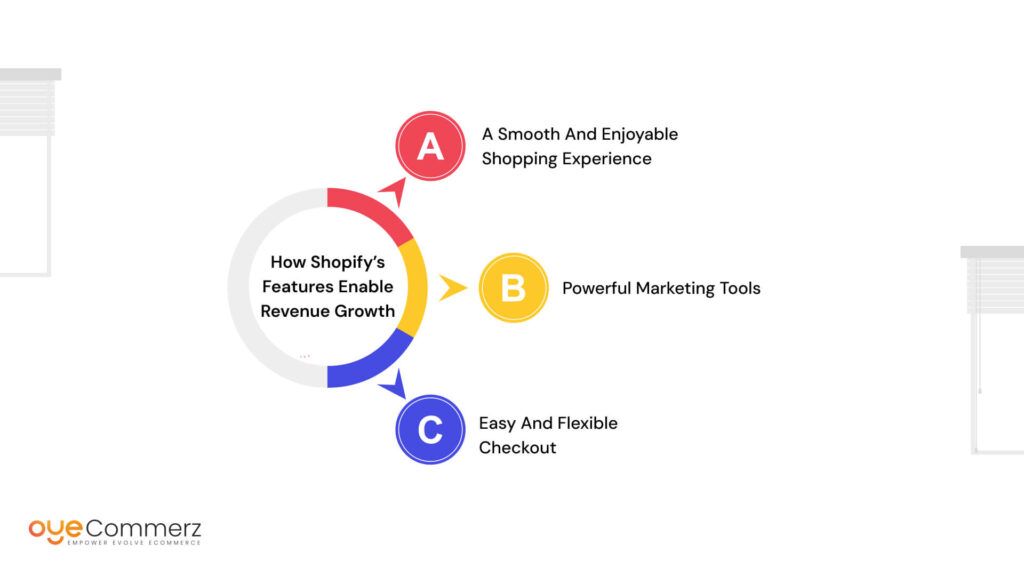
A Smooth and Enjoyable Shopping Experience
- Faster Website Loading: A fast-loading site keeps visitors from leaving, reducing bounce rates and increasing the chances of a sale.
- Mobile-Friendly Designs: With more people shopping on their phones, Shopify’s mobile-optimized templates make it easy for customers to browse and buy, no matter the device they’re using.
Powerful Marketing Tools
- Email Campaigns Built In: Shopify helps you stay connected with customers through email promotions.
- Abandoned Cart Recovery: Automatically remind customers to complete their purchases, bringing in sales that might have been lost.
- Discount and Promo Systems: Easily create and manage discounts to attract more buyers.
Easy and Flexible Checkout
- Multi-Currency Payments: Let customers pay in their local currency, making the shopping experience more comfortable for international buyers.
- Local Payment Gateways: Shopify supports various payment methods, ensuring customers can use their preferred option for a seamless checkout experience.
These features work together to attract more shoppers, make their experience better, and ultimately drive more sales for your store.
Steps For Shopify Migration from Magento
Migrating from Magento to Shopify offers your business the opportunity to increase revenue by taking advantage of Shopify’s powerful features, seamless user experience, and marketing tools. Here’s a step-by-step guide to help you migrate efficiently and set your store up for long-term success.
1. Plan Your Migration Strategy
Before diving into the technical details, outline a clear migration plan. Focus on your revenue goals by identifying the products that perform best and prioritizing customer experience. Think about how you can use Shopify’s features to improve sales, such as upselling, cross-selling, and marketing automation.
2. Choose the Right Shopify Plan
Select a Shopify plan that suits your business needs. Whether you need basic features or advanced tools, Shopify has different pricing tiers that offer various levels of functionality. Choose the one that aligns with your growth goals, taking into account factors like scalability, budget, and the volume of sales you expect to process.
3. Clean Your Magento Data
Before transferring your data, make sure to clean it up. Review your product catalogs, customer lists, and order histories to ensure everything is accurate and up to date. Eliminating outdated or irrelevant data will help your Shopify store stay organized and make the migration process smoother.
4. Set Up Shopify and Customize Your Store
Once you’ve signed up for Shopify, set up your store by choosing a theme that suits your brand. Shopify offers plenty of customizable, mobile-friendly themes designed to enhance the user experience. Additionally, tailor your store’s layout, navigation, and checkout process to maximize conversions and improve the customer journey.
5. Migrate Your Products and Content
Now, it’s time to transfer your data from Magento to Shopify. You can use Shopify’s built-in import tools or third-party apps to move product data, including descriptions, prices, images, and variants. Additionally, migrate important content like blogs, customer reviews, and SEO settings (meta tags, titles) to retain your search engine rankings.
6. Implement 301 Redirects
To prevent losing valuable organic traffic, set up 301 redirects for your Magento URLs to their corresponding Shopify URLs. This ensures that visitors to your old Magento store will be automatically redirected to the correct pages on your new Shopify store, preventing 404 errors and maintaining your SEO rankings.
7. Optimize for SEO and Revenue Growth
Once your store is set up, optimize it for SEO by taking advantage of Shopify’s built-in SEO features. Customize page titles, meta descriptions, and image alt texts to improve your search engine rankings. Additionally, implement Shopify’s powerful tools for abandoned cart recovery, upselling, and cross-selling to boost your average order value (AOV).
8. Set Up Payment Gateways and Checkout
Shopify supports various payment gateways, allowing you to offer your customers multiple options. Set up local and international payment methods and enable multi-currency options to cater to a global audience. Customize your checkout process to make it easy and fast, reducing cart abandonment and improving conversion rates.
9. Use Marketing and Analytics Tools
Shopify’s integrated marketing tools, such as email campaigns, discount codes, and social media integrations, can help you reach more customers and increase sales. Leverage Shopify’s built-in analytics to track sales, customer behavior, and product performance, making data-driven decisions to optimize your store for revenue growth.
10. Test Everything Before Going Live
Before launching your new Shopify store, thoroughly test everything, including the checkout process, product pages, and mobile experience. Ensure that all redirects are working, payment gateways are functioning, and your store is fully optimized for both desktop and mobile users.
11. Launch Your Store and Monitor Performance
Once you’ve tested and made necessary adjustments, it’s time to launch your Shopify store. Post-launch, monitor your store’s performance closely. Look at key metrics like conversion rates, customer retention, and average order value to ensure your revenue goals are being met.
12. Continuously Optimize for Revenue
Post-launch, it’s important to keep optimizing your store. Regularly analyze customer feedback, track performance data, and update your marketing strategies to stay ahead of the competition. Shopify’s robust app ecosystem can help you add new features to increase your revenue over time.
By following these steps, you can successfully migrate from Magento to Shopify and set your business up for growth. Shopify’s features, combined with a strategic migration, will not only streamline your operations but also maximize your revenue potential. Would you like assistance in planning your migration? Contact us at Oyecommerz today to get started!
Revenue-Boosting Strategies During Migration
When migrating from Magento to Shopify, applying smart revenue-boosting strategies will set you up for success and maximize your sales potential. Here are five essential steps to implement during the migration process:
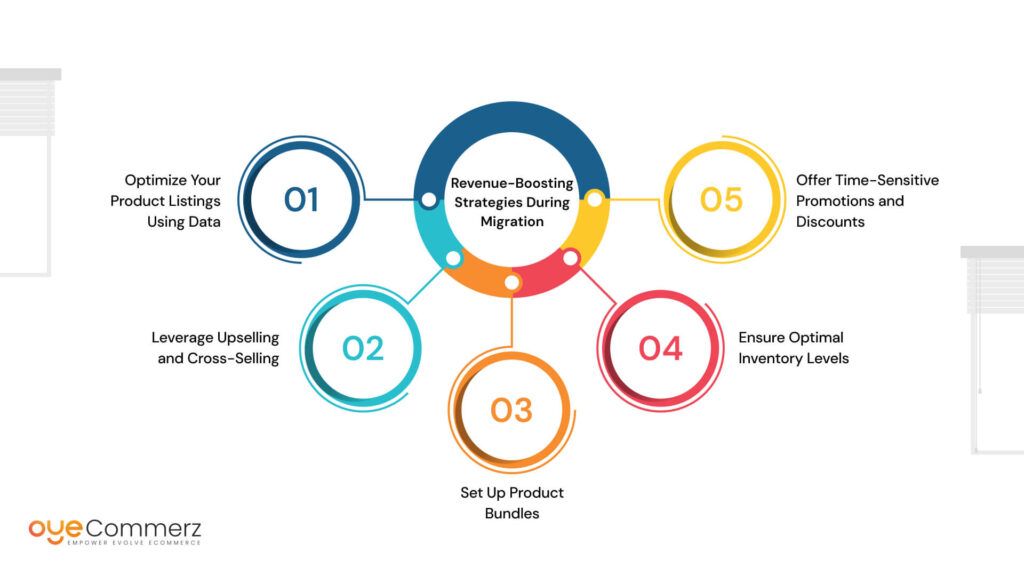
1. Optimize Your Product Listings Using Data
Use the sales data from your Magento store to identify which products were your top performers. Highlight these bestsellers on your new Shopify store by showcasing them on your homepage or in promotional banners. This increases their visibility and attracts more customers, helping you drive more sales right away.
2. Leverage Upselling and Cross-Selling
Shopify’s app ecosystem offers powerful tools to implement upselling and cross-selling strategies. Apps like Bold Upsell or Frequently Bought Together allow you to recommend related or complementary products to customers, increasing their average order value (AOV) by encouraging them to add more items to their cart.
3. Set Up Product Bundles
Creating product bundles is an effective way to increase sales and offer better value to customers. By grouping complementary products together at a discounted rate, you can entice customers to buy more in a single transaction. Shopify makes it easy to set up product bundles through apps, which can boost your overall revenue.
4. Ensure Optimal Inventory Levels
Running out of stock can lead to missed sales, so it’s crucial to ensure your best-selling products are always available. Use Shopify’s inventory management tools to keep track of stock levels and automate reordering processes, ensuring you never miss an opportunity to make a sale.
5. Offer Time-Sensitive Promotions and Discounts
Shopify allows you to set up time-limited discounts and flash sales, which can create a sense of urgency among customers. Use these tools to offer special discounts during the migration process, encouraging customers to make purchases before the promotion ends. These time-sensitive offers can help boost sales quickly and keep customers engaged.
By focusing on these key revenue-boosting strategies during the migration to Shopify, you’ll be able to create a store optimized for higher sales from day one, setting the stage for long-term growth.
Preserving and Enhancing SEO During Migration
When migrating your store from Magento to Shopify, protecting and improving your SEO is critical to maintaining your search engine rankings and driving organic traffic. Here are five key steps to ensure your SEO stays intact and even improves during the migration process:
1. Use 301 Redirects to Preserve Traffic
To avoid losing valuable traffic from search engines, implement 301 redirects from your old Magento URLs to their new corresponding Shopify URLs. This ensures that visitors and search engines are directed to the right pages on your new Shopify store, preventing 404 errors and preserving your existing SEO value.
2. Optimize Meta Tags and Descriptions
Shopify makes it easy to optimize your meta titles, descriptions, and alt text for images. These elements are crucial for SEO and help search engines understand your content. During migration, take the time to update these fields with targeted keywords, ensuring that your pages are optimized for search engines from day one.
3. Migrate and Enhance High-Performing Content
Take your best-performing content such as product descriptions, blog posts, and landing pages from Magento and bring it over to Shopify. As you transfer the content, update it with more relevant keywords, better product descriptions, and improved formatting. This helps improve search engine rankings and makes the content more engaging for customers.
4. Utilize Shopify’s SEO Apps
Shopify has a range of SEO apps available that can help you automate and manage your SEO strategy. Tools like SEO Booster or Plug in SEO can assist with optimizing your store’s structure, improving page load speed, and managing redirects, ensuring your SEO is on track post-migration.
5. Ensure Mobile Optimization for Better Rankings
Google prioritizes mobile-friendly websites in its rankings, and Shopify is designed to be mobile-responsive. Ensure that your new Shopify store is fully optimized for mobile users. This can boost your SEO rankings and improve the user experience, leading to better engagement and higher conversion rates.
By focusing on these key steps during migration, you can maintain your store’s SEO ranking and visibility, potentially improving it as you move to Shopify. With the right strategy, you can drive more organic traffic, leading to increased sales and revenue.
Leveraging Shopify Apps to Increase Revenue
Shopify’s app store offers tools that can help you maximize sales and keep customers coming back. Here are some of the best ways to use Shopify apps for growing your revenue:
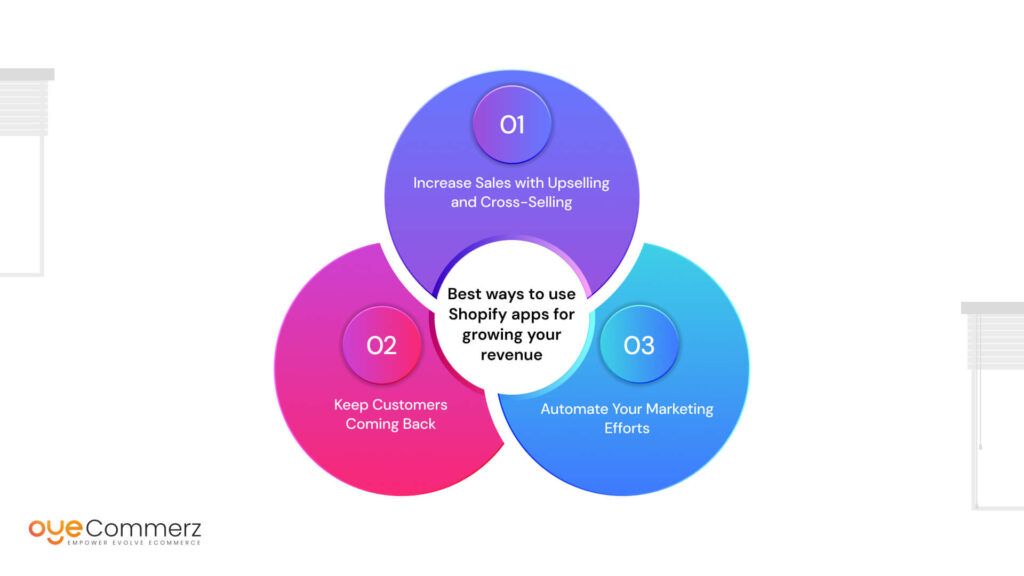
Increase Sales with Upselling and Cross-Selling
Shopify apps like ReConvert Upsell & Bold Upsell allow you to recommend additional products to customers while they shop or at checkout. These suggestions encourage customers to add more items to their cart, boosting your average order value (AOV).
Keep Customers Coming Back
Apps like Smile.io and LoyaltyLion help you create loyalty programs that reward repeat customers with points, discounts, or perks. These programs make customers feel valued and encourage them to shop with you again.
Automate Your Marketing Efforts
Apps like Klaviyo or Omnisend help you send personalized email and SMS campaigns to your customers. You can use them to recover abandoned carts, announce new products, or offer special discounts, all of which drive more sales.
With the right Shopify apps, you can increase sales, improve customer loyalty, and save time with automated marketing. These tools are powerful resources to grow your revenue and scale your business.
Advanced Shopify Features for Revenue Growth
Shopify offers a wide range of advanced features that can take your revenue to the next level. By leveraging these tools, you can stay competitive, scale your business, and increase your sales. Here are additional ways Shopify helps maximize revenue:
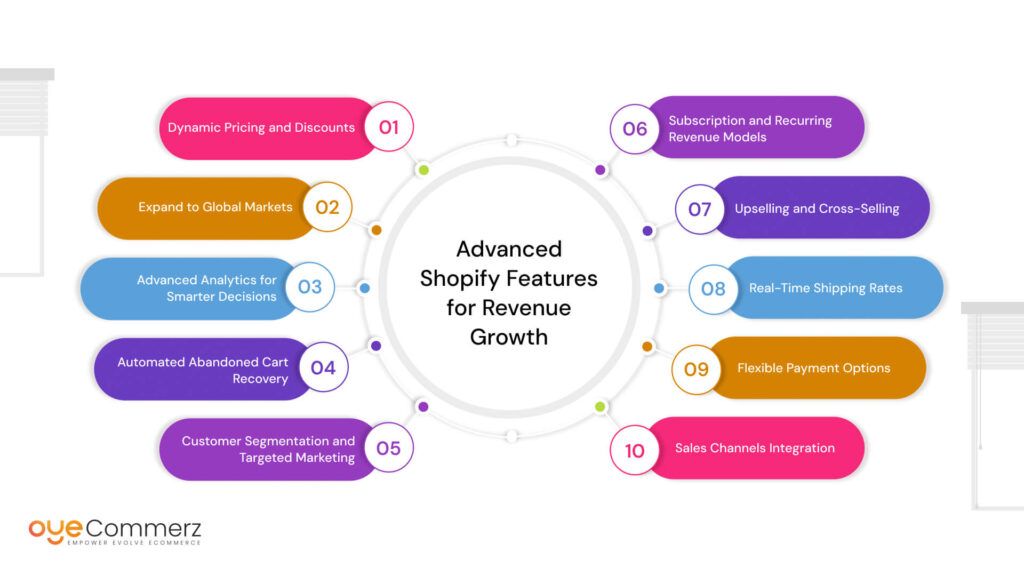
Dynamic Pricing and Discounts
Shopify allows you to run time-sensitive promotions and dynamic pricing campaigns that can boost urgency and increase sales. For instance, you can offer flash sales, seasonal discounts, or set up special pricing for specific customer segments. This strategy encourages customers to make quicker purchase decisions, boosting your average order value and conversion rates.
Expand to Global Markets
With Shopify’s multi-currency and multi-language features, you can expand your business globally. You can easily offer international customers a seamless shopping experience by showing product prices in their local currency and providing content in different languages. This accessibility helps you attract more customers from across the world, increasing international sales and expanding your market reach.
Advanced Analytics for Smarter Decisions
Shopify’s built-in analytics tools offer deep insights into your sales trends, customer behavior, and product performance. By understanding what’s working and what isn’t, you can fine-tune your strategies. Use this data to adjust your pricing, marketing campaigns, or product listings to drive more traffic, increase conversions, and boost your revenue.
Automated Abandoned Cart Recovery
Shopify helps you recover lost sales by automatically sending emails to customers who abandon their shopping carts. This feature allows you to remind them about their purchase and offer discounts or incentives to bring them back. By recovering these sales, you can significantly increase your revenue without any additional marketing efforts.
Customer Segmentation and Targeted Marketing
Shopify allows you to segment your customers based on their behaviors and preferences, such as repeat buyers, location, or order value. You can then create personalized marketing campaigns tailored to these segments, improving engagement and conversion rates. Targeted marketing leads to higher revenue by delivering the right message to the right customers at the right time.
Subscription and Recurring Revenue Models
With apps like Recharge or Bold Subscriptions, Shopify enables you to offer subscription services, allowing customers to pay for products on a recurring basis. This model increases customer lifetime value (CLV) and ensures consistent revenue, as customers are more likely to make repeat purchases.
Upselling and Cross-Selling
Shopify’s advanced apps and features allow you to implement upselling and cross-selling strategies. You can recommend higher-value products or bundle related items together to encourage customers to spend more. These strategies boost average order value (AOV) and increase revenue per customer.
Real-Time Shipping Rates
Shopify allows you to display real-time shipping rates from multiple carriers during checkout. This transparency encourages customers to complete their purchases, knowing exactly what they will pay for shipping. Offering multiple shipping options can improve customer satisfaction and reduce cart abandonment, leading to more completed sales.
Flexible Payment Options
Shopify supports various payment gateways, including credit cards, PayPal, Apple Pay, and even cryptocurrency. Offering customers different payment methods increases the likelihood of conversions, as customers can choose their preferred option. More payment flexibility can lead to higher revenue, as customers are more likely to follow through with their purchases.
Sales Channels Integration
Shopify allows you to sell across multiple channels, including social media platforms (Facebook, Instagram), online marketplaces (Amazon, eBay), and even brick-and-mortar locations via POS (Point of Sale). This integration expands your reach and allows you to capture sales from various touchpoints, increasing overall revenue.
By taking advantage of these advanced features, Shopify allows you to optimize every aspect of your eCommerce store from pricing and marketing to customer experience and global expansion. These tools empower you to make smarter decisions, attract more customers, and ultimately grow your business and revenue.
Why Partner with Oyecommerz for Revenue-Optimized Migration?
At Oyecommerz, we specialize in seamless Magento to Shopify migrations that are designed to boost your revenue. Our team understands the importance of a smooth transition while optimizing your store for growth. Here’s why partnering with us is the right choice for your business:
Expertly Aligned Migration Strategies
We don’t just move your store, we strategically plan and execute the migration to align with your revenue goals. Our process ensures that your store is set up for long-term growth by focusing on key areas like product optimization, customer experience, and marketing strategies.
Maximizing Revenue Post-Migration
Our approach goes beyond migration; we help you leverage Shopify’s features and apps to unlock new growth opportunities. By optimizing key elements such as product recommendations, customer retention, and marketing automation, we ensure that your store thrives after the move to Shopify.
With Oyecommerz, you can trust that your migration is in the hands of experts who prioritize not only a smooth transition but also driving measurable results for your business.
Contact to Migrate your Site to Shopify Now
Conclusion
Migrating from Magento to Shopify is a game-changer for eCommerce businesses looking to maximize revenue, improve performance, and enhance user experience. With Shopify’s scalable infrastructure, built-in SEO tools, and seamless integrations, your store will be well-equipped for future growth.
At Oyecommerz, we specialize in Magento to Shopify migration services, ensuring a smooth transition without data loss or SEO ranking drops. Whether you need a Magento to Shopify SEO Migration, expert guidance on Shopify SEO Optimization, or a fully customized eCommerce store migration, our team has you covered.
Ready to Migrate Your Magento Store to Shopify? Let our Shopify Migration Experts handle the process efficiently so you can focus on growing your business.
Frequently Asked Questions
Migrating from Magento to Shopify involves several key steps:
Plan Your Migration:
Analyze your Magento store structure, products, customers, and order history.
Choose what data to migrate (products, collections, customer info, orders, etc.).
Set Up Your Shopify Store:
Choose a theme, configure settings, and install essential apps.
Export Data from Magento:
Use Magento’s export tools or a migration app to extract data.
Import Data into Shopify:
Use the Store Importer tool in Shopify or a third-party app like LitExtension or Matrixify.
Design & Customize:
Customize your Shopify theme to match your branding.
Set Up Redirects:
Add 301 redirects to maintain SEO and avoid broken links.
Test & Launch:
Thoroughly test the new store (products, checkout, payments) before going live.
🔧 Or let experts like OyeCommerz handle a seamless, zero-downtime migration for you.
Yes if you’re looking for:
A user-friendly interface with no complex code
Easier store management
Faster load times and better mobile optimization
Lower maintenance and hosting costs
Access to a huge library of Shopify apps and integrations
Shopify is ideal for businesses that want to scale without the tech hassle. Magento is powerful, but can be overwhelming for non-developers and costlier in the long run.
Generally, this is rare but it may make sense if:
You need deep customization and control over backend functionality
You have an enterprise-level business with a dedicated dev team
You want to build highly complex B2B features
⚠️ However, most growing DTC and B2C brands prefer Shopify for its ease, speed, and ecosystem. Always weigh your technical needs vs. maintenance overhead.
Magento and Shopify are two separate eCommerce platforms, so they don’t integrate directly.
However, you can:
Use third-party tools to sync inventory between a Magento backend and a Shopify front-end (though rare and complex)
Migrate from one to the other, but they’re not designed to operate together
If you’re looking to transition from Magento to Shopify, a full migration is the recommended approach.

